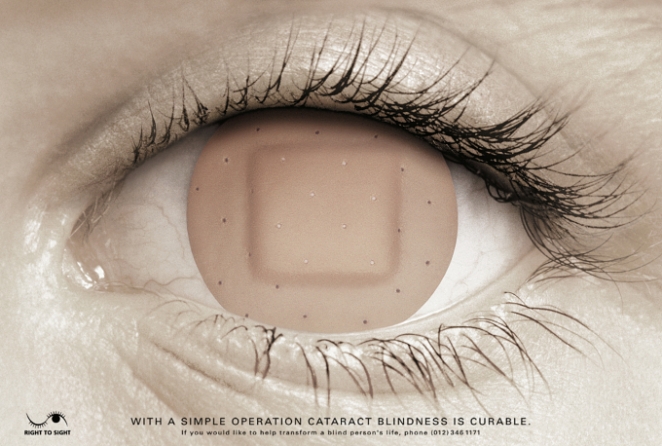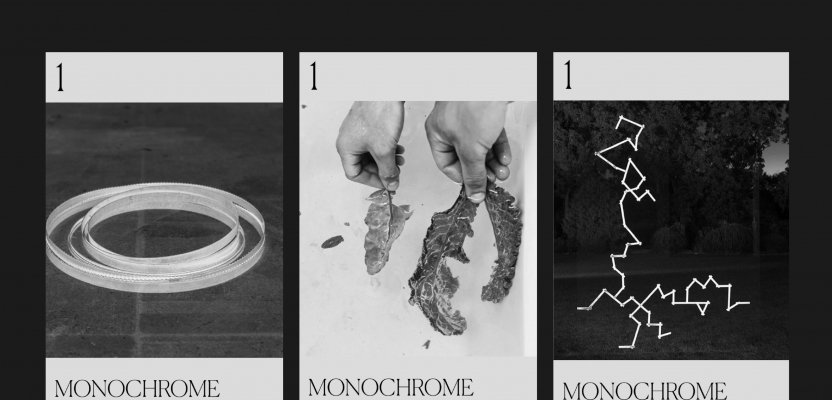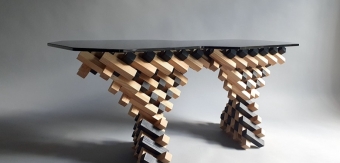A guide to Art Director rates, with tips and advice from experienced professionals in the industry
In the advertising world, Art Directors are the hand of creativity. They are responsible for what commercial campaigns look like, they oversee projects and source external professionals, such as photographers, to ensure that a project comes to life the best way it can.
While a number of Art Directors will be hired in-house (and in fact, most start their careers that way), many others prefer to work freelance, perhaps by pairing up with a fellow copywriter to found a Creative Team, or simply as freelancers flying solo. As with many freelance specialisms, there is a slight scarcity of resources out there, and if you are just starting out as a freelance Art Director, it is natural to wonder how much to charge for your design and art direction projects.
Not being an Art Director myself, I tapped into the community and decided to get in touch with a few masters of the craft who would be way more helpful than myself. The guide below includes answers from Christine Serchia and Rupert Allcock, two extremely talented Art Directors here on Creativepool.
If you are still considering whether you should become a Art Director or not, make sure to check out our Art Director job description!

Chirstine's works are unmistakably hers. Clean, elegant, simple, unique.
How do I charge clients as an Art Director?
Art directors are incredibly flexible in their craft and can easily work on a multitude of different projects. As with any other specialism in the freelance scene, there is no hard-and-fast rule as to how to charge your clients, but there are guidelines you can follow.
Rupert, for example, prefers to charge a day rate, though he has other options depending on the client at hand. He first looks at the amount of work required, he discusses it thoroughly with the client, then establishes which of his options will be more suitable to the current project. His rates work on a sliding scale, with the hourly rate being the highest. “The reason for this is that there’s often a lot involved in getting a quick turn-around project completed, and to do it over the course of just a few hours needs to be worth my while,” Rupert says. “On the other hand, a month gives you more time to get things done, and guarantees you’ll be busy for that period. That said, the rate I use the most is my daily rate.“
Christine adopts a slightly different approach. She demonstrates a great deal of flexibility and can charge her clients per project, per hour of per day, depending on the amount and kind of work required. She usually starts by giving an estimate of delivery times, discussing the costs once those are clear – this usually sets up the conversation in a neat way and enables the client to understand perfectly where their money is going.
Additionally, Christine provides an introductory discount for first-time clients, useful to establish a relationship of trust from the onset. In accordance with her general flexibility, she may also lower her fees if she loves the brand or project itself, and she may tweak her rates depending on the client’s home country standards. “I also do a great deal of research based on every client and determine what is the best price for my target market,” Christine explains. “Is it an individual or company? What size company and in which industry? Is this campaign one which warrants a significant portion of their budget? What are standard rates based on their industry in their city or country of origin? If you position yourself to collaborate with brands who are already a few years into their business they’ll be better suited to offer you a more accurate payment of your time, than a business in their first or second year. I think it’s good to align with brands who match your experience level, and grow along with them through your collaborations.”
So in a nutshell:
- Art directors can work on a multitude of projects, designs and campaigns
- A day rate is generally preferred for art directors, but this can vary depending on the project
- Less time to complete a project generally equates to higher fees
- It can be useful to offer introductory discounts to first-time clients
- It is highly recommended to fully research your client before quoting

Rupert's style has every element you would expect from a top Art Director in their field: bold, disruptive, unexpected and, at times, subvertive.
How do I calculate the costs of a project?
As mentioned, the top Art Directors will often work on a variety of different projects. However, these can usually be broken down into useful parts with separate costs each. Rupert, for instance, tries to break down each project into as many key parts as possible, in the attempt to anticipate all the possible expenses that the work will require.
It is usually possible to break down a project into:
- Conceptual Phase
- Development Phase
- Design Phase
- Production Phase
Each of these phases has its associated costs, be it research times or hiring suppliers at a more advanced stage. This is also the moment when most freelancers fail to accurately calculate some of the additional costs involved with any project, namely admin fees, concept fees, travel costs, stock images and photography. It is incredibly easy to overlook these elements when charging for a project, but they all have their associated costs and they should all drive the final price up.
You should also keep the deadline at the top of your mind. If it’s unrealistic or incredibly hard to meet, you should charge more. Rupert explains: “If a client wants something on short notice, just like any other service, they should expect to pay a premium. Projects with urgent deadlines will often involve working after hours, which is charged at overtime rates. You should let your client know up front that you charge for overtime.”
Christine’s approach is much similar. She breaks down the costs in even more details, according to the following:
- Your accountant
- Pension contributions
- Equipment - great to establish an in-house photo studio or way of making your own images
- Marketing
- Savings to cover holiday / time off / paternity and maternity / sick leave
- Web domains
- Business banking charges
- File transfer / cloud / storage subscription
- Creative software subscriptions
- Education / online courses
Christine herself loves to keep up to date with current developments in the design scene, and she often enrols into courses to learn something new from master designers. The more you learn, the fewer people you will have to outsource to bring your project to completion, without compromising quality.
Furthermore, Christine notes that it is “rare to receive payment on the date of invoice. I recommend requesting a deposit at the start of each project, so that you can cover your own expenses. Ideally, I try to create savings through these deposits of at least three months’ savings for peace of mind. Alternatively, I offer a small discount if clients pay within two weeks from date of invoice as an incentive, and to reward them for paying before the required 30 days.”
In some cases, having a business partner can help. Christine set up her business with her twin sister Jennifer, so that when either is having trouble meeting a deadline, the other one can step in to give a hand.
So in a nutshell:
- Break down the project into phases and charge according to each
- Don’t forget to account for admin fees
- Take the deadline into account and charge more for more urgent jobs
- Be prepared to have an overtime rate, but make sure to let the client know!
- Consider offering a small, special discount to incentivise speedier payments
- Having a business partner to help you share the weight can help in the long run

Chirstine used to be an Art Director in-house for Cubitt, where she developed her financial understanding of the industry and different project requirements.
Common mistakes when pricing Design & Art Direction work
According to Christine, “Underestimating post-production and multiple revision rounds for assets” is a common mistake when pricing your work. Even the most experienced professionals may get it wrong, so it’s always best to overestimate the time required than to underestimate. “You can always invoice for less if you’ve ended up using less time, but asking for more retrospectively can feel unfair when the project is near completion and the client feels they have no other choice,” Christine says.
The worst mistake an Art Director can make, however, is not including expenses in your contract (or not having a contract at all!). Rupert believes that it is common to assume “you’re only providing a client with ‘art direction’ or ‘design’, when you’re actually providing them with a creative service that includes multiple aspects.”
Rupert recommends seeing yourself as a business, not as a solo freelancer. The core of your business is certainly the art direction or design craft, but there are other “departments” you must provide for as well. “As the Art Director you’re wearing your Creative hat, but when you’re putting together an invoice you’ll be wearing your Account Department hat. When you’re doing research, you’re working in the Research Department. These ‘departments’ need to get paid too, and the rate/cost may be less than your Art Direction rate. But don’t put ‘Accounts Department’ on the invoice, rather use the term ‘Administration Fee’ – it reflects the billable time that you spent administrating the job.”
According to Rupert, other aspects that you may bill for separately include DTP and Finished Art elements, “such as the make-up of final material, the creation of bulk files, and the sending out and transfer of files. Costs for services such as retouching, illustration and photography can also be listed separately on your quotes and invoices. And in the case of a supplier (e.g. a photographer that you sourced and commissioned), add your mark-up to their cost and display the total on your quote/invoice.”
This is to ensure you are paid fairly and you are representing your own brand in the best way possible, at any given time. “If you don’t get your rates right from the start, you run the risk of either doing too much work for the amount you agreed on, or charging too much and not being given any more work by that client in the future,” Rupert concludes.
Having that business-level confidence about your rates is what truly makes the difference between a successful business and one that simply doesn’t seem to take off. Christine says: “As a freelancer, you are viewed as your own brand, your own business. Like a business, people will recommend you based on the quality of your work/product/aesthetic and trust in your word and ability. If you are requesting more in compensation than what is reasonable, it will be clear to your client. If you ask for too little, that might be misread as a lack of experience. It’s important to understand what is fair on both sides, and know the value of your work. Your concept and visual direction have a great say in how the final work is received.”

Rupert has worked on a wide range of different projects, all carrying his clearly identifiable style.
Useful Resources
The one of an Art Director is a craft which requires continuous development and care. It is recommended that you invest in your skillset in your free time, so that you can keep learning new ways to provide the best services possible to your clients. “I read articles (like this one) or take short but impactful online courses by people in the industry whose work you’re drawn to, which enable you with more knowledge on the business/marketing side of things, on concept, and on technical skills. The more you know the less work you will need to outsource,” Christine concludes.
Additionally, there are resources out there to help you in your journey. If you are based in the United States and you are an Art Director in production, you can join the Art Directors’ Guild. The association provides access to exclusive events, resources and directories which will help you in your journey to become a top tier Art Director in the industry.
Additionally, there is D&AD, literally spelled out as “Design & Art Direction”, one of the most famous educational organisations to help designers in the advertising industry succeed in the UK and beyond.
And of course, there’s Creativepool. Our very own magazine is a great source of inspiration and guidance for any freelancer out there, with weekly articles highlighting the best freelancers in the community and the hottest trends in the creative freelance market. Remember that, on average, freelancers are incredibly supportive of each other and it’s incredibly difficult to find a freelancer who won’t be willing to give you a hand as you navigate the murky waters of setting up your own business. Make sure to start connecting with fellow art directors straight away, and let us know how it went in the comments below!






